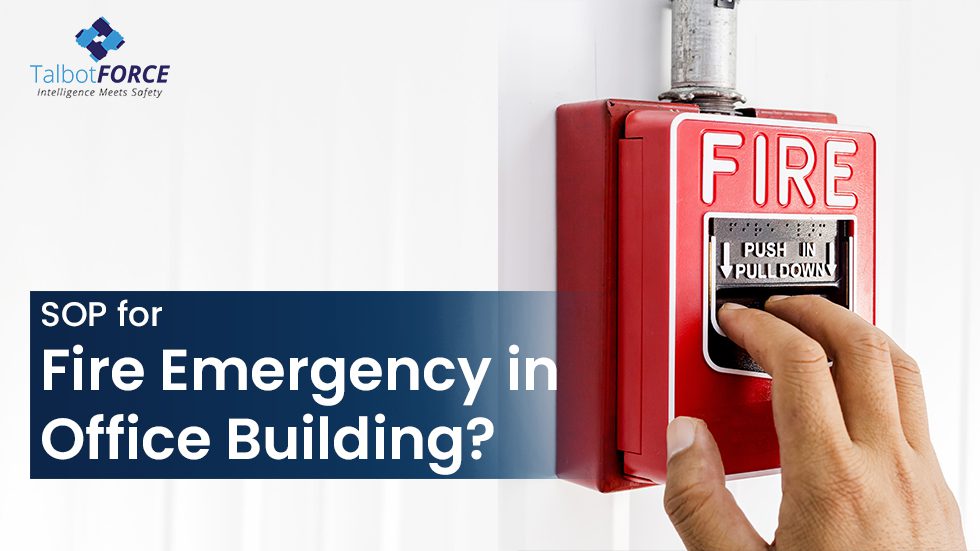What is the SOP for Fire Emergency in Office Building?
Fire emergencies pose a significant threat to property and lives, making it imperative for office buildings to have a well-defined fire emergency preparedness plan. Let’s explore the standard operating procedures (SOP) for handling fire emergencies in office buildings:
1. Identification of Emergency Scenario
The first step in any fire emergency is to identify the scenario promptly. This involves activating emergency detection equipment such as smoke detectors and alerting the appropriate personnel, including the EHSS representative, site head, and EHSS department. Activation of hooters or alarms further aids in alerting the workforce and initiating evacuation procedures.
2. Evacuation Plan
A comprehensive evacuation plan is essential for ensuring the safe evacuation of occupants during a fire emergency. This plan should include a detailed sketch of the floor layout, highlighting emergency exits and pathways for worker movement. Clear markings and approved signage along evacuation paths and doors facilitate swift and orderly evacuation.
3. Containment Procedure
Effective firefighting equipment should be readily available within the facility, accompanied by personnel trained in their usage. Firefighting equipment such as fire extinguishers, fire hose reels, and sand buckets play a crucial role in containing and extinguishing fires, thus minimizing potential damage and risk to life.
4. Communication
External assistance from firefighting departments may be necessary in certain fire emergencies. Displaying important contact numbers of nearby fire stations and hospitals at prominent locations within the facility ensures swift communication and coordination during emergencies.
5. Reporting
Following the resolution of a fire emergency, it is essential to compile a comprehensive report detailing the situation, remedial measures taken, and the current scenario. Site heads or representatives should communicate this information to the EHSS department for documentation and analysis.
Types of Fire
Understanding the categorization of fires is crucial for implementing appropriate firefighting measures:
- Class A: Involves combustible materials of organic nature, extinguishable with water, foam, and halocarbons.
- Class B: Includes flammable liquids like petroleum products, extinguishable with cleaning agents, carbon dioxide, and dry powder.
- Class C: Involves flammable gases, such as liquefied gas, extinguishable with cleaning agents, dry powder, and carbon dioxide extinguishers.
- Class D: Involves combustible metals, requiring special metal fire extinguishers for extinguishment.
Preventive Measures
To mitigate the risk of fire accidents, implementing preventive measures is crucial:
- Designating smoking areas.
- Installing smoke alarms and sprinkler systems.
- Storing and using flammable products with utmost caution.
- Displaying clear signage with instructions.
- Conducting regular fire drills to ensure preparedness and awareness among occupants.
By adhering to these SOPs and preventive measures, office buildings can effectively manage fire emergencies, safeguarding lives and property within the premises. Prioritizing fire safety not only mitigates risks but also fosters a secure and resilient work environment for all occupants.
